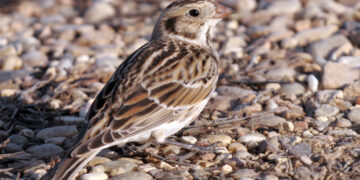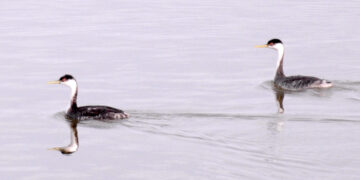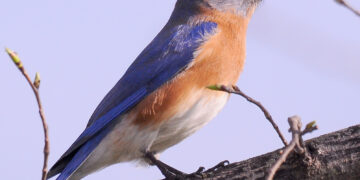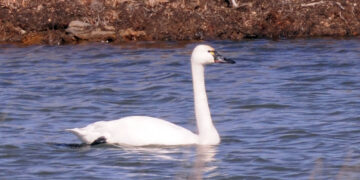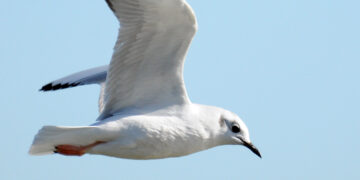The tufted titmouse looks like a small, gray cardinal, and causes kids to giggle when its name is said aloud.
They are frequent visitors to backyard feeders and are especially fond of sunflower seeds. Rather than walking around gobbling up seeds from the ground, titmice will usually grab a seed and fly to a high perch to work on opening the shell.
I find it comical to watch this behavior as titmice pin down the sunflower seed with both feet and hammer down on the shell with their beaks to get to the delicious kernels inside.
Tufted titmice are often found with, or near, Carolina chickadees, with which it is related. That’s somewhat of an understatement, though, as the two are often thick as thieves, as the saying goes. If you see one, just look around a little and you’ll probably see the other.
I enjoy having them around the house, with their joyful whistling call, peter-peter-peter-peter. They also have a scratchy little scolding voice, neh-neh-neh, which they use when disturbed by something.
Description
Tufted titmice are gray on their backs, with light gray to white on their breasts and bellies. They have a black square on their foreheads, and gray crests. The crests are kept down unless the bird is excited or alarmed. They have rust coloring along the flanks.
Immature birds often lack the black forehead.
Range & Habitat
Tufted titmice inhabit woodlands all over Oklahoma and the eastern half of the United States. They can be found in wooded areas of suburbs and cities as well. They do not migrate.
Diet
Titmice eat mostly spiders and insects such as wasps, ants, beetles, etc., during warmer months. Although they prefer sunflower seeds, they will also eat suet, peanut pieces and other seeds as well.
Nesting
They nest in tree cavities, often abandoned by woodpeckers and will nest in a manmade nesting box, provided the dimensions are correct. Visit the Cornell Lab of Ornithology’s Nest Watch website for more information on building nesting boxes.
The Cornell Lab reports that titmice line their nests with soft materials such as hair, fur, wool, and cotton, and sometimes pluck hairs directly from living mammals. Naturalists examining old nests have identified raccoon, opossum, dog, fox squirrel, red squirrel, rabbit, horse, cow, cat, mouse, woodchuck and even human hair in titmouse nests, according to the Cornell Lab.
Odds & Ends
• The range of these birds continues to expand northward. Bird experts believe feeders are contributing to the bird’s success.
• Remember to check out my Randy’s Natural World YouTube channel: www.youtube.com/user/randyadventure.
Editor’s Note: Randy Mitchell is a freelance writer and photographer. He has been an avid birdwatcher, nature enthusiast and photographer for more than 40 years. Reach him at [email protected].
Want to reach a local audience and grow your business?
Our website is the perfect platform to connect with engaged readers in your local area.
Whether you're looking for banner ads, sponsored content, or custom promotions, we can tailor a package to meet your needs.
Contact us today to learn more about advertising opportunities!
CONTACT US NOW

